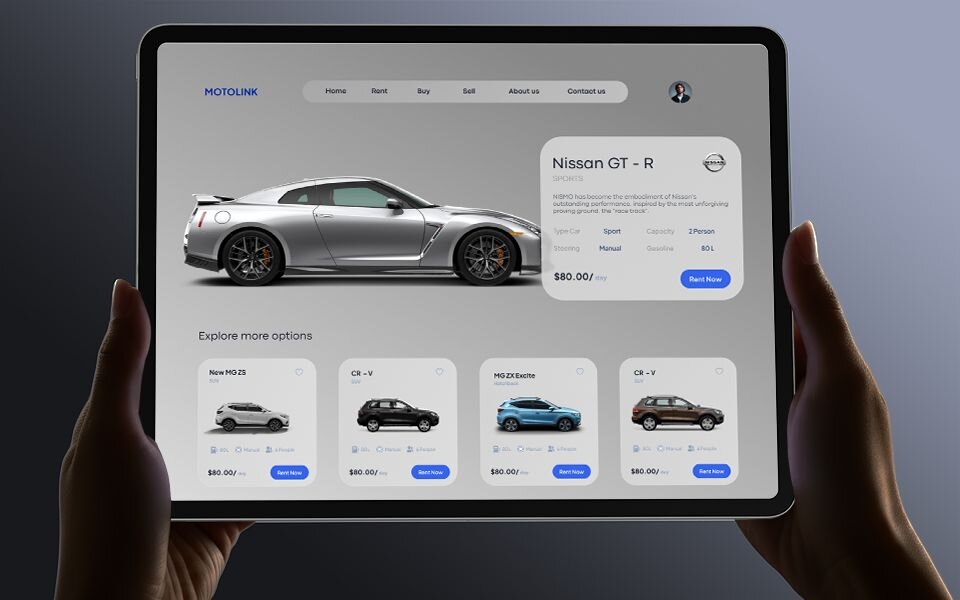Every product team eventually faces the same challenge: balancing speed with consistency. A design system isn’t just a set of UI components, it’s a shared language that keeps your product coherent and your team in sync as you grow.
 By Kenzy Assem
By Kenzy Assem
If you’re a part of an expanding product design team, then you probably know this feeling all too well: your app is starting to look like it was designed by five different people (because it was) and now everything feels incoherent, and is throwing off your whole design process.
Seven different versions of the same button, inconsistent spacing, and a thousand colors in your file’s palette. Those are all telltale signs that you need to have a design system.
But what is a design system, and how can it help you streamline your design flow without inhibiting your creativity?
A design system is the shared space that unites design, development, and product, and makes them flow harmoniously together. A good design system acts as the handshake between designers and developers. It streamlines collaboration, ensures visual (and functional) consistency, and speeds up the design and development process. It also makes sure that the entire team stays sane.
To put it more clearly, a design system is essentially a toolkit of reusable components and guidelines that maintain unity across products. It acts like a roadmap, and gives teams a common language and structure to design and develop with efficiency. It eliminates the need to recreate elements from scratch, so it speeds up production and keeps large-scale products unified.
Here are the core elements every design system should include:
These define the “why” behind your design decisions. They shape how your product sounds, feels, and behaves.
These are the visual cornerstone of your system. They are the “tokens” that define your product’s identity.
They are reusable, coded building blocks like buttons, input fields, cards, and navigation bars. Each component includes variations, states (hover, active, disabled), and documentation on how and when to use them.
These are common solutions to UI problems that are recurring. For example: form layouts, confirmation dialogs, or onboarding flows. Patterns convey how multiple components work together to form cohesive experiences.
These are rules for tone, voice, and writing style that ensure language is consistent and on-brand across all mediums.
This is the central hub that helps tie everything together. Good documentation explains what to use, and why and how to use it. It should contain examples, code snippets, and do’s and don’ts.
Having a clear process for updating and reviewing the system ensures that it evolves with your product instead of becoming outdated or too rigid.
Every time you push aside alignment and cohesion for speed, you add on to your “Design Debt”, and it quickly adds up. Here are some of the most common friction moments that we’ve experienced before coming up with our own design system:
Visual inconsistency across pages or platforms.
Developers kept rebuilding the same things from scratch.
Different interactions for the same action confused users.
New hires spent weeks trying to figure out what “normal” looks like.
Once we were able to sit down and refine our design systems, our process went from chaotic and confusing to smooth and harmonious. Consistency became effortless, output got faster, communication improved, and scalability felt natural.
If you're a growing product team and you need a place to begin, this is how we recommend you start:
Take screenshots of all your current designs. Find all the duplicates and inconsistencies.
Observe the elements that naturally repeat, and the ones that break the pattern. That’s when your system’s core identity will start revealing itself.
Define your color palette, type scale, spacing, and corner radii. These are the smallest building blocks of your product’s identity.
Start creating the essentials: buttons, forms, cards, modals. Make sure they're properly named, and design- and development-friendly.
A design system without documentation is nothing but a pretty Figma file. That’s why you need to write basic guidelines for why and how each component should be used.
A lot of teams worry that a design system will confine them and that too much structure will restrain their creativity. But, it’s actually the opposite.
By handling repetitive tasks, design systems nurture creativity and allow developers and designers to experiment, explore, and play around with concepts. Your team focuses on what's innovative rather than what's broken.
That structure is very pivotal as your team and product expand. Otherwise, small inconsistencies pile up, miscommunication goes to an all time high, and no one is sure what button type is "the right one." A design system serves as your map, and allows you to condense all of your decisions, lessons learned, and best practices into something clear, scalable, and reusable.
A great system makes your product look unified, and makes your team work in rhythm. As a result, you’ll find the creative process to be a lot more smooth, light, and fun.

Head of Product Design
Kenzy leads the design vision at Qodera, bridging creativity and strategy to craft digital experiences that feel as good as they look. She’s passionate about building systems that empower teams to design with clarity, purpose, and play.